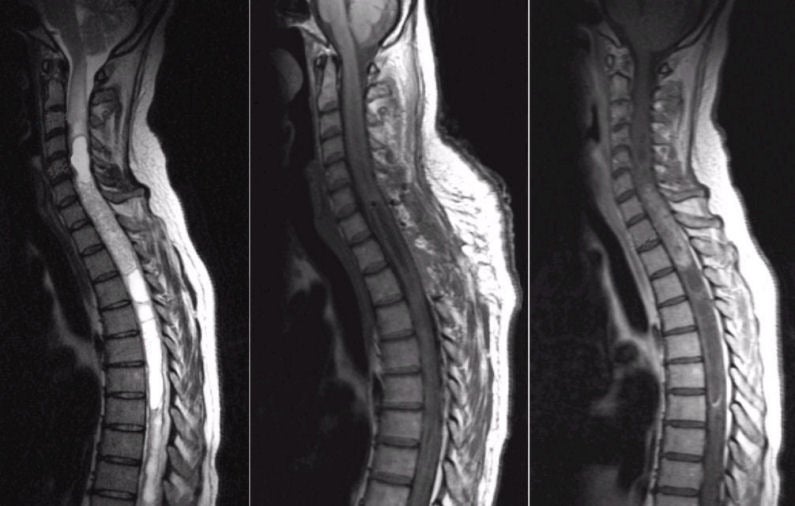
|
A 35 year-old woman presented with progressive quadriparesis, numbness of all four extremities and urinary incontinence over six weeks. |

![]()
![]()
![]()
![]()
| Ependymoma:
Sagittal MRI scans of the cervical and
thoracic spine; (Left) T2-weighted image; (Middle) T1-weighted
image; (Right) T1-weighted with gadolinium (GAD) image. Note on the T2-weighted sagittal scan
(left image), there is a large mass
extending from C6-T2 that enhances
with gadolinium (right image). In addition, there is a multi-loculated syrinx
above and below the mass which
is very bright on the T2-weighted image (consistent with water).
Lastly, note the abnormal signal within the cord above the syrinx (at C1-C3), and below
the syrinx (at T7); this is edema within the cord.
Neurosurgical exploration revealed a malignant intramedullary ependymoma.
Ependymomas originate from ependymal cells located
within the lining of the ventricles and in the
central canal of the spinal cord. They are rare brain and spinal
cord
tumors, and more commonly affect children. This case also
demonstrates that a syrinx typically occurs in one of the following
situations: 1) as a congenital malformation; 2) in the setting of trauma; or 3) associated
with a spinal neoplasm. |
Revised
11/25/06
Copyrighted 2006. David C Preston